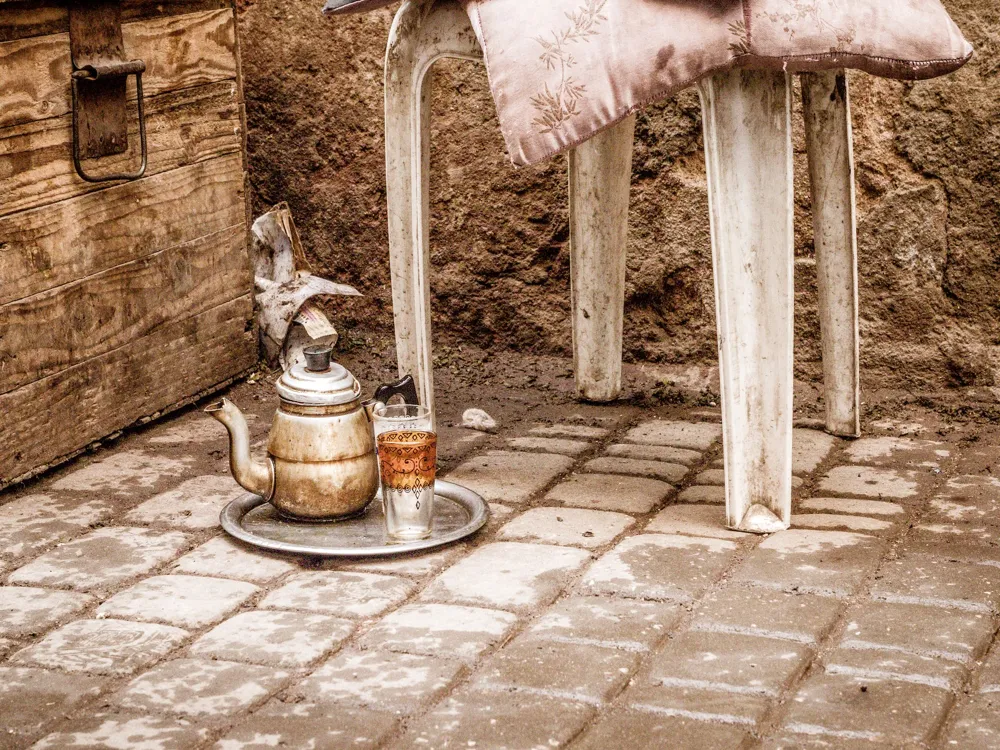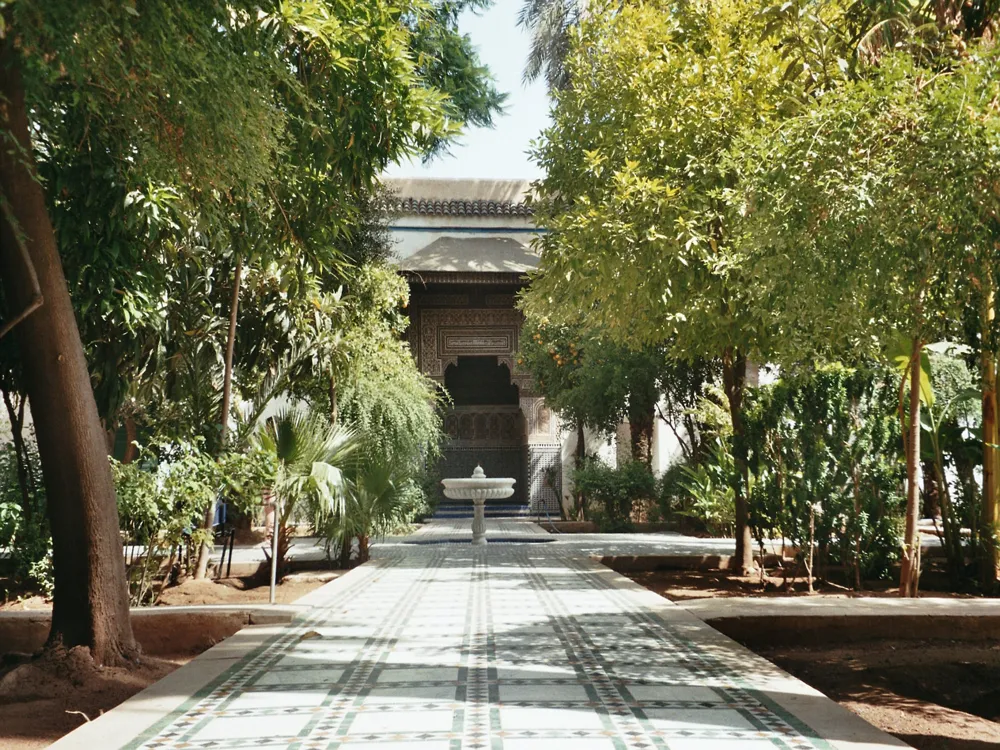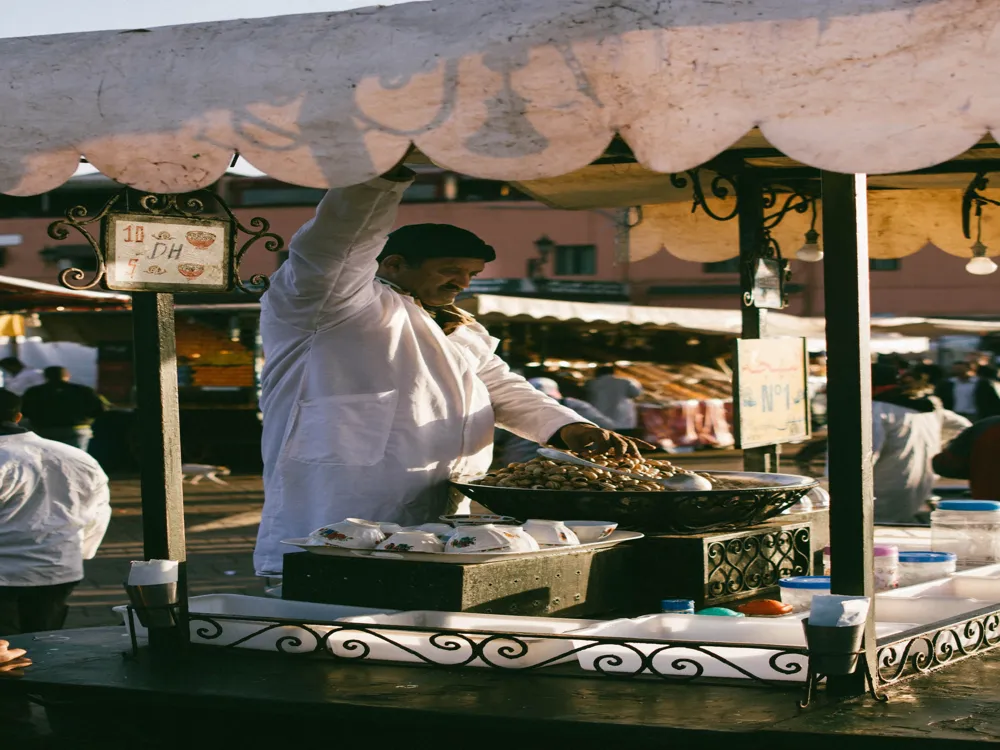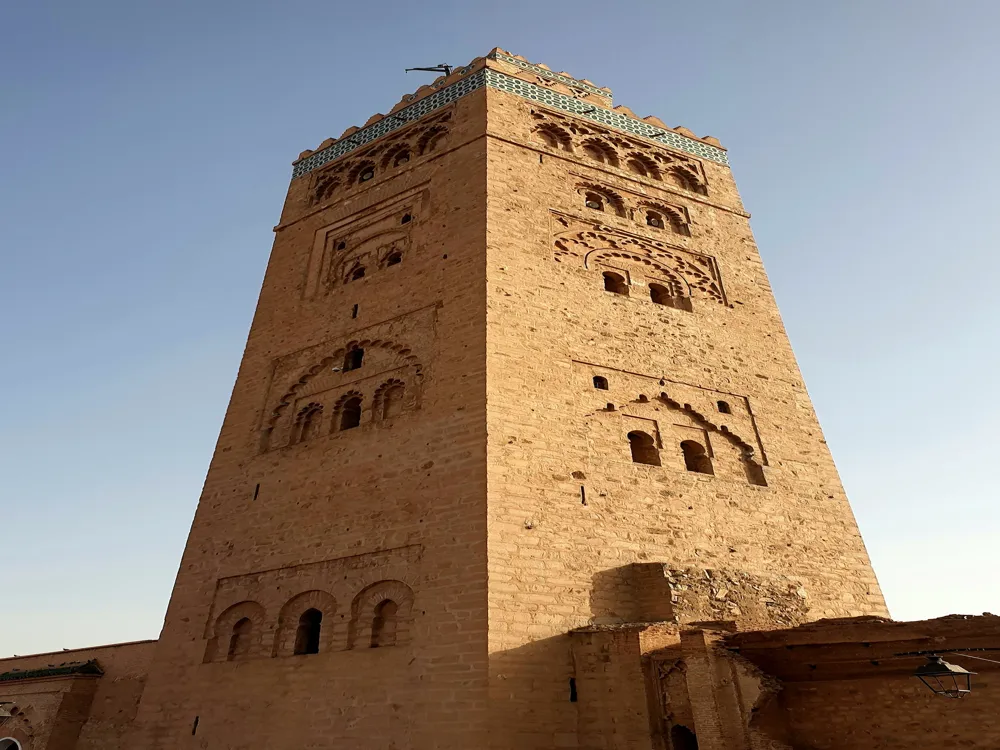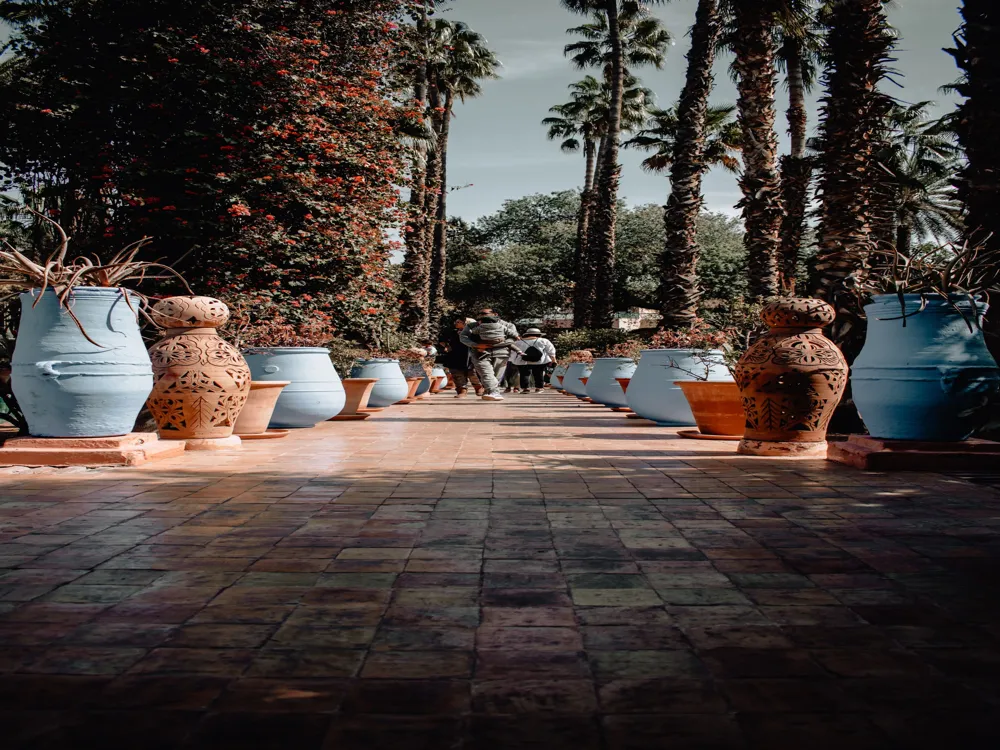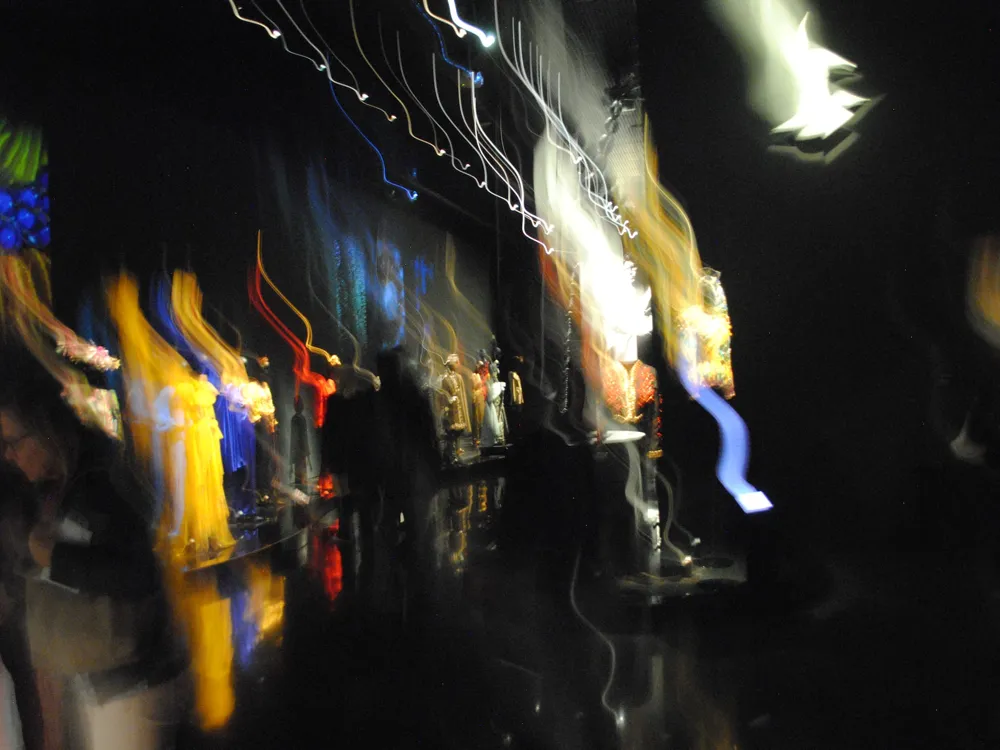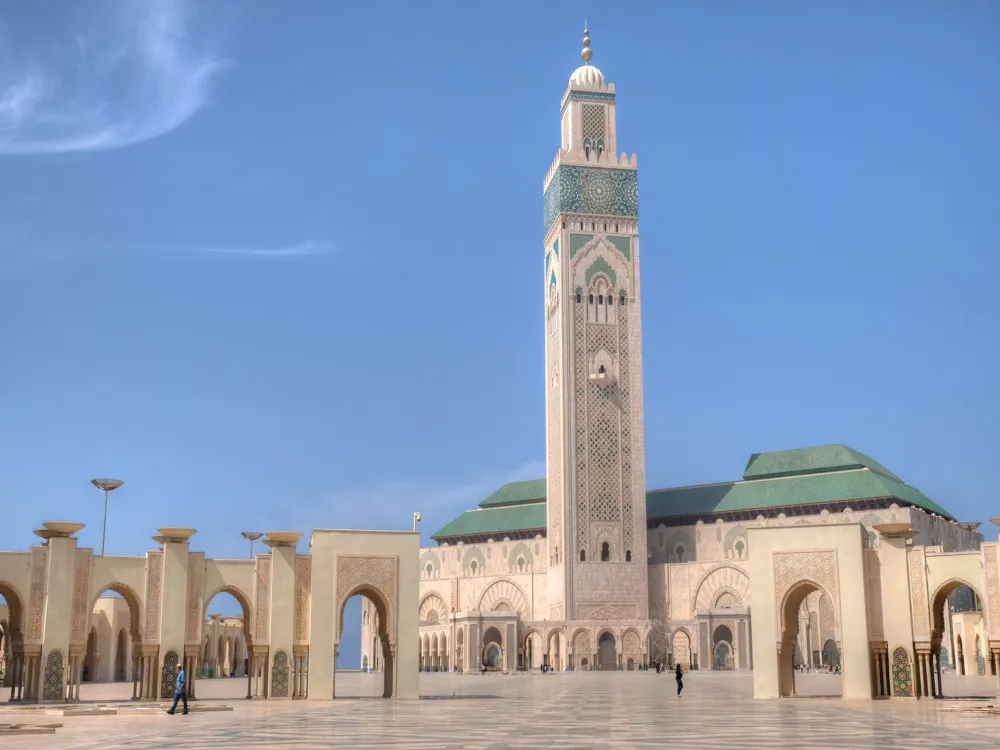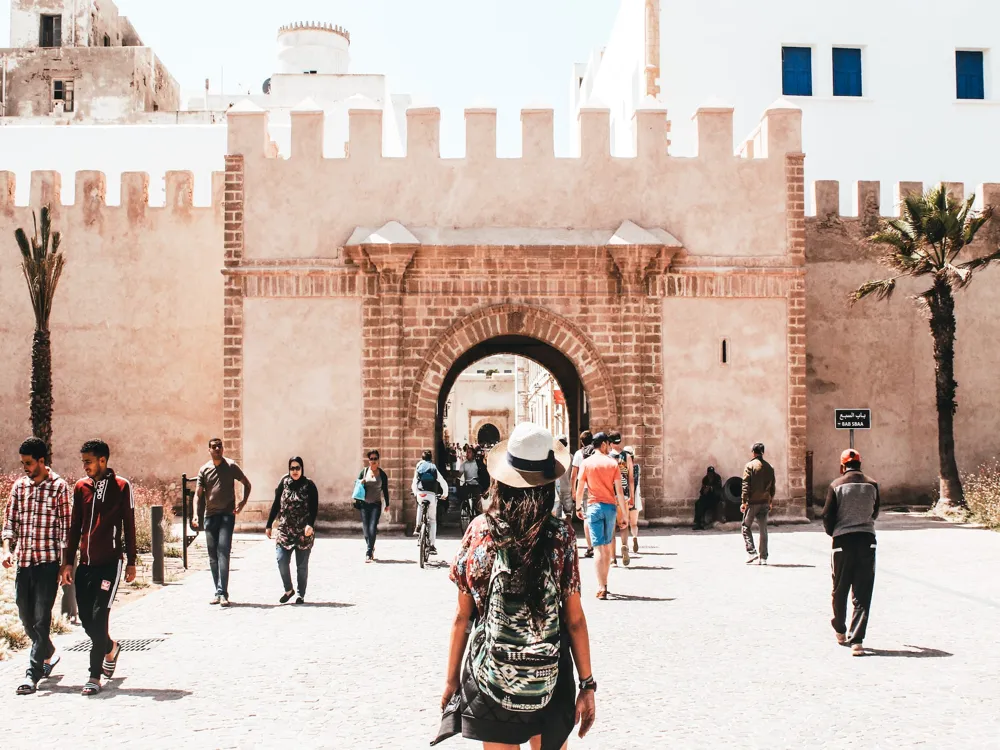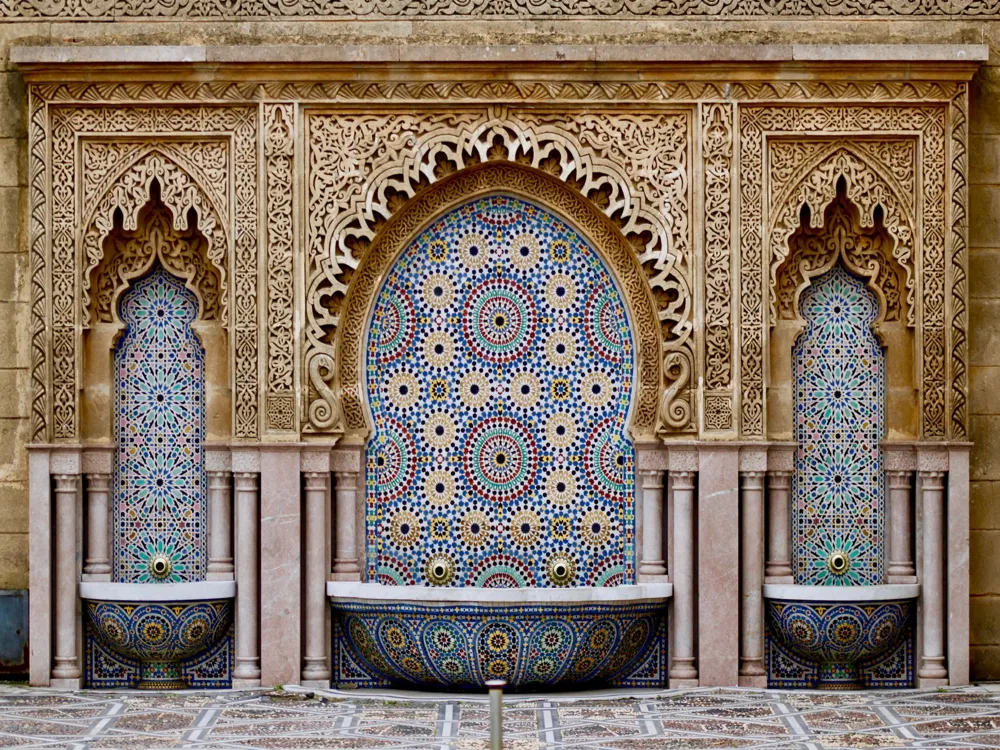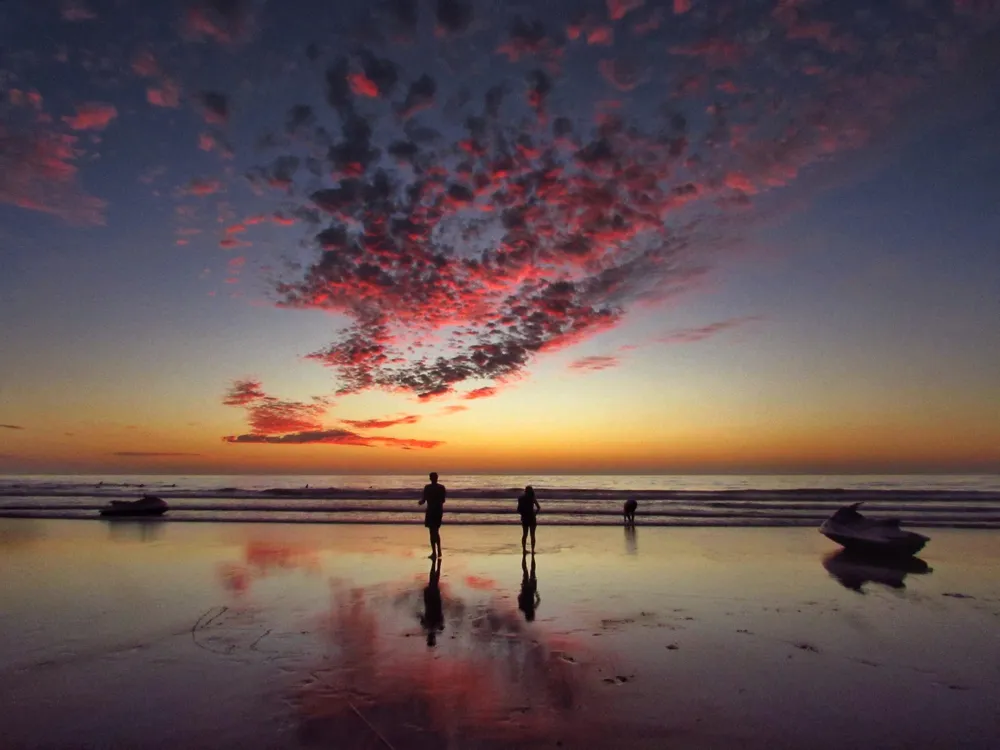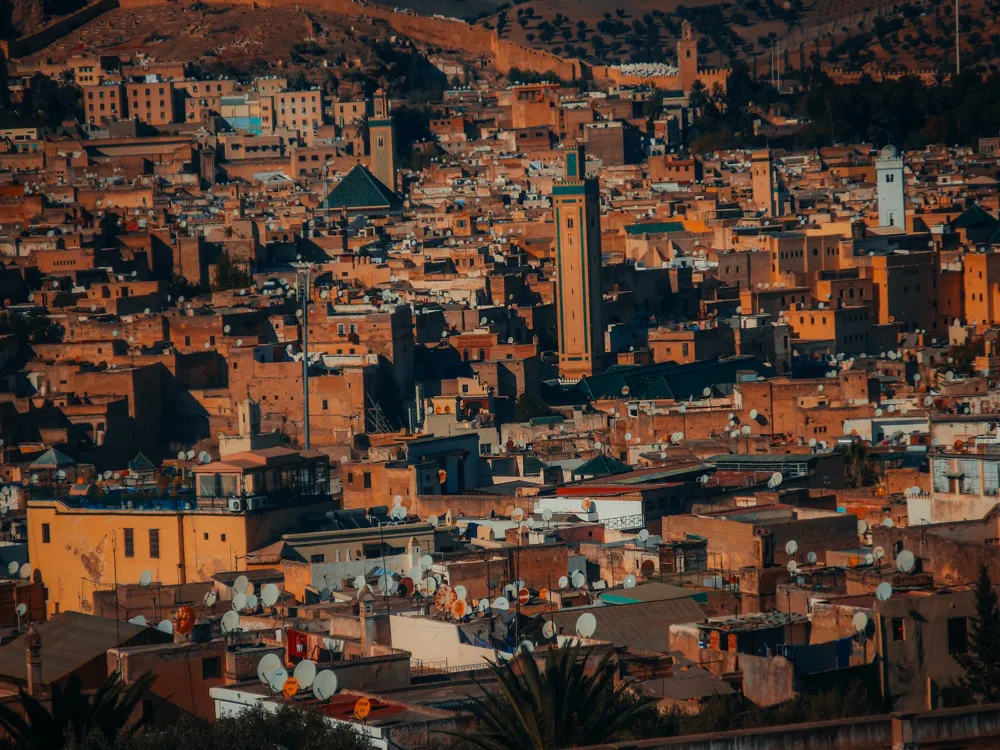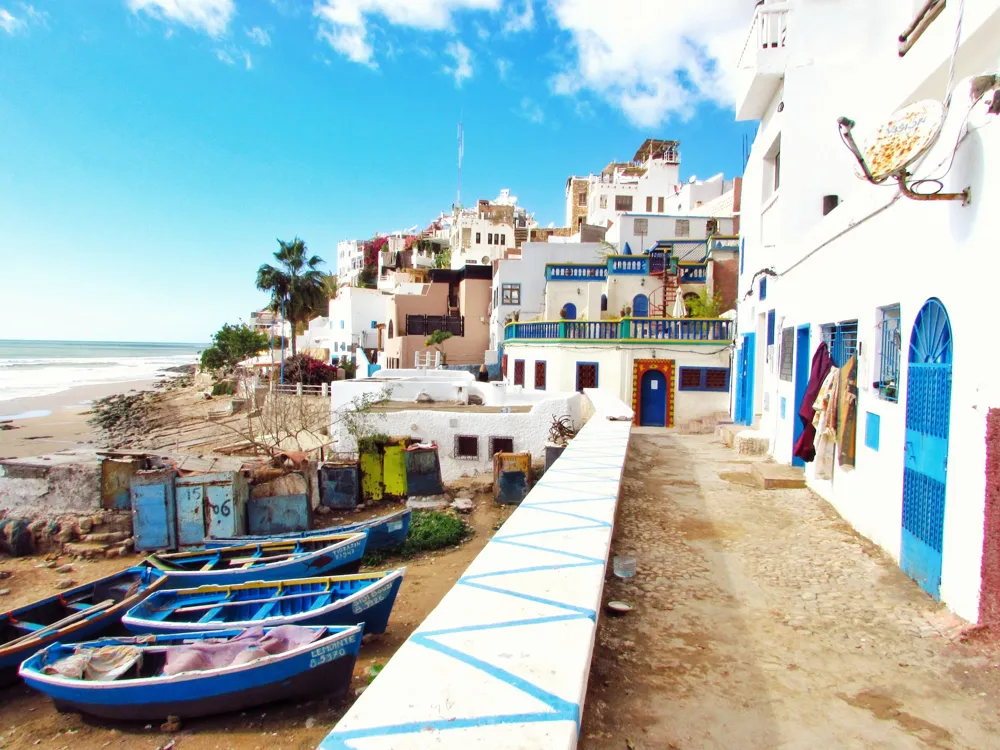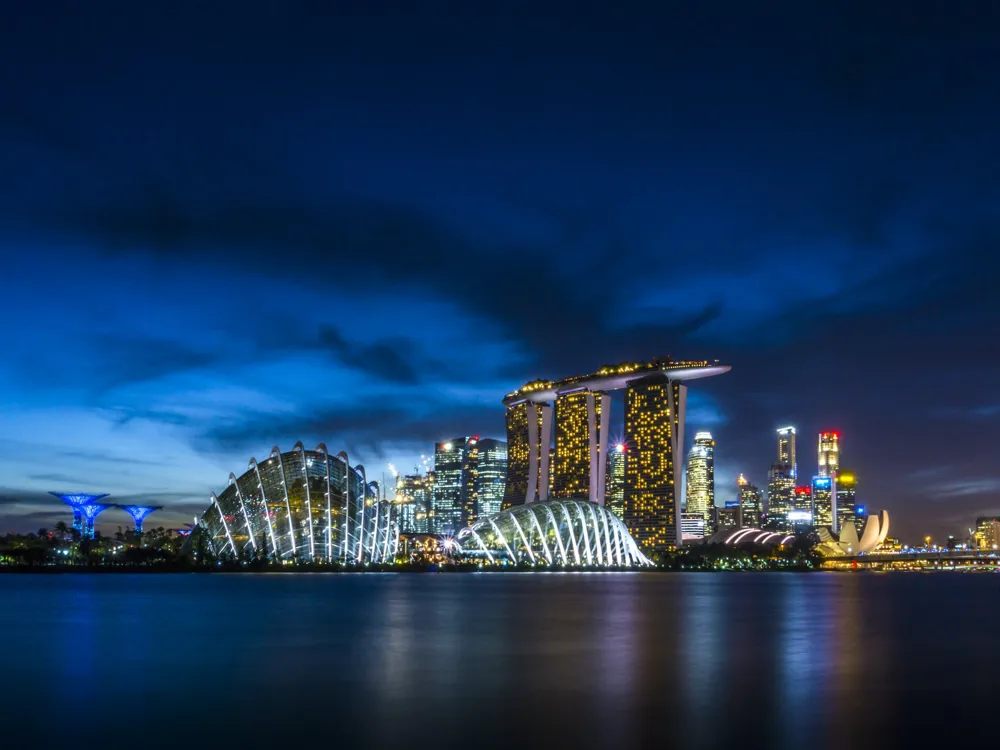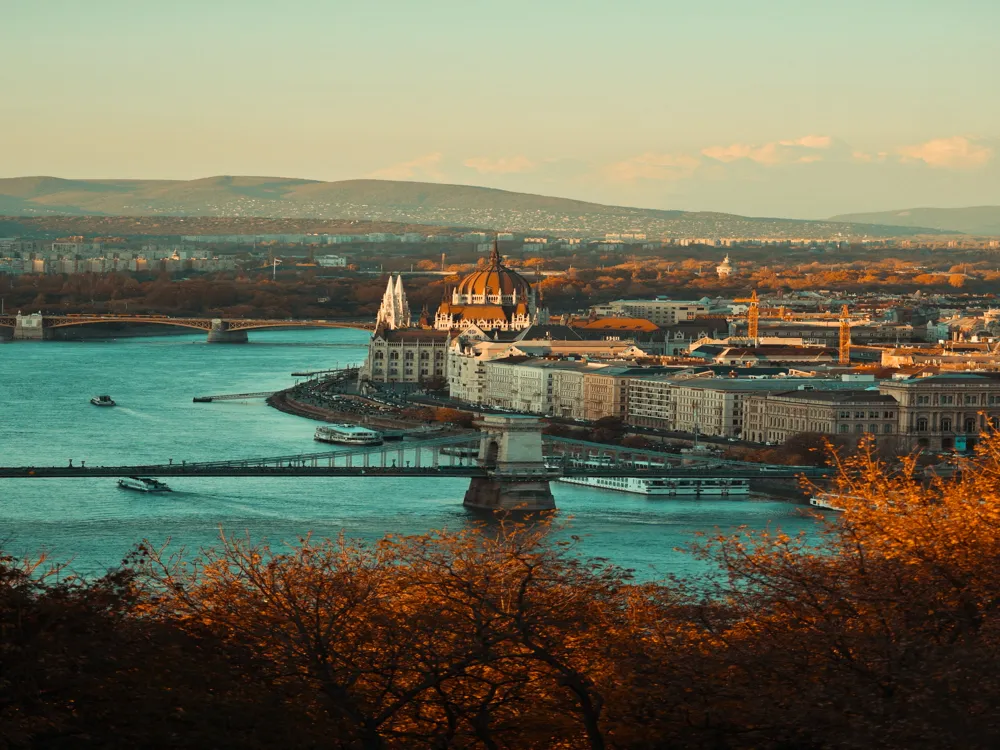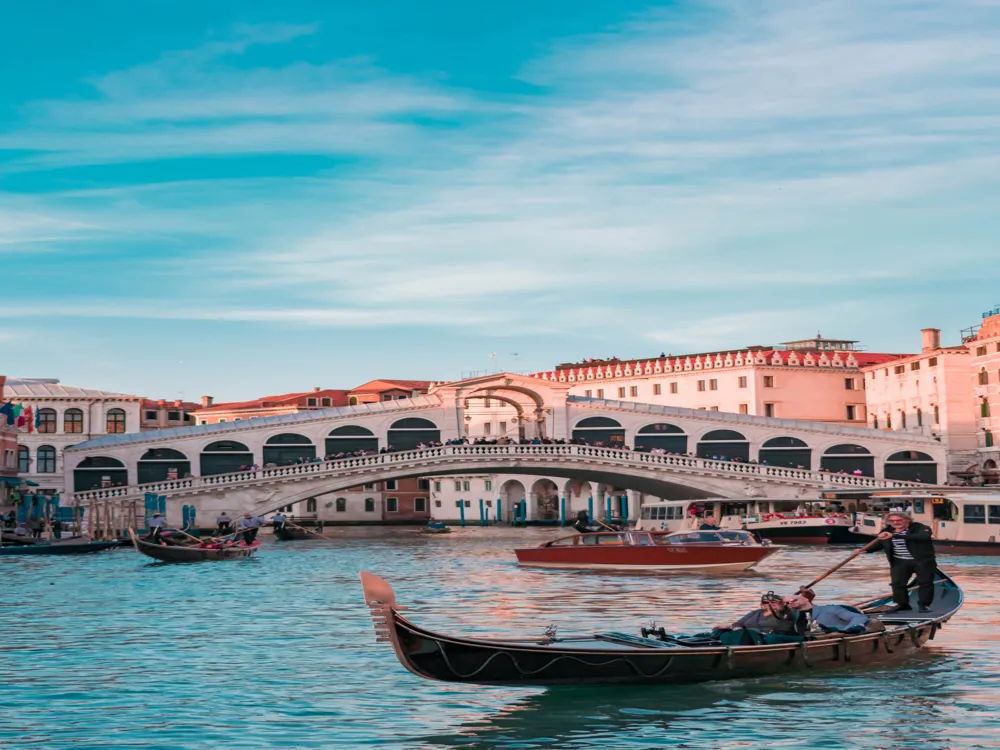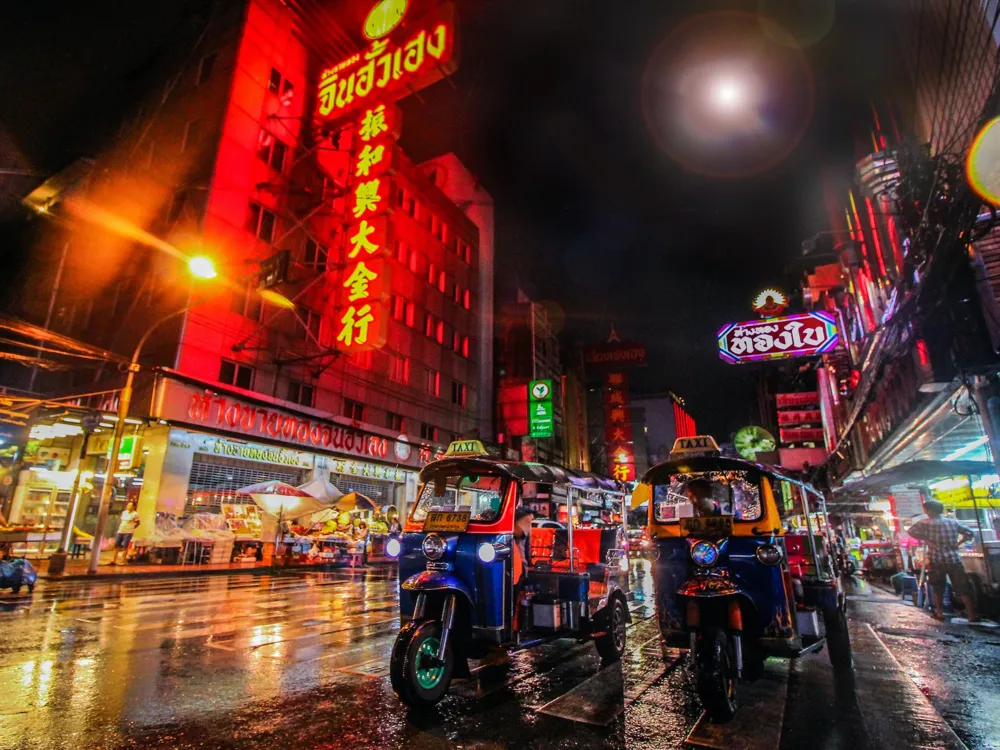Djemaa el-Fna, the vibrant heart of Marrakech, is a mesmerizing square located in the medina quarter of the city. Known for its rich history and cultural significance, this bustling marketplace is a living testament to Morocco's age-old traditions. The square transforms throughout the day: from a lively market in the morning to a captivating hub of storytelling, music, and performance arts by night. Here, visitors are treated to an authentic Moroccan experience, a blend of colors, scents, and sounds that capture the essence of the nation's soul. The origin of Djemaa el-Fna dates back to the 11th century, playing a pivotal role in the social and commercial life of Marrakech. The name itself, which translates to 'Assembly of the Dead,' hints at its past use as a ground for public executions. However, today, it is a place of celebration and community, attracting both locals and tourists alike. The square is surrounded by historical landmarks, including mosques, palaces, and souks, making it a crucial aspect of Marrakech's urban fabric and a window into its past. The cultural significance of Djemaa el-Fna has been recognized by UNESCO, which declared it a 'Masterpiece of World Heritage' in 2001. This recognition underscores the square's role in the oral and intangible heritage of humanity, showcasing traditional performances such as storytelling, Gnaoua music, and belly dancing. The square is not just a tourist attraction but a living cultural space where the traditional Moroccan way of life continues to thrive. A visit to Djemaa el-Fna offers an immersive experience into Moroccan culture. During the day, the square is teeming with snake charmers, henna tattoo artists, and vendors selling a variety of goods, from traditional Moroccan spices to handcrafted jewelry. As the sun sets, the square transforms, and the aroma of grilled meats and spices fills the air. Food stalls open up, offering a taste of authentic Moroccan cuisine, from tangy tagines to sweet mint tea. The square's layout and design reflect the traditional Moroccan style, with an open space that encourages social interaction and community gathering. The architecture around the square, characterized by ornate tile work, intricate carvings, and Arabesque designs, adds to the overall charm and allure of Djemaa el-Fna. This architectural ensemble tells a story of Marrakech's evolution over centuries, blending influences from the Berber, Arab, and Andalusian cultures. In conclusion, Djemaa el-Fna stands as a symbol of Morocco's rich history and cultural diversity. It offers an unparalleled window into the traditions and lifestyle of the Moroccan people, making it a must-visit destination for anyone traveling to Marrakech. The square's dynamic atmosphere, historical significance, and cultural richness make it more than just a tourist spot; it's a journey into the heart of Morocco. The architecture of Djemaa el-Fna, a UNESCO World Heritage site, is a testament to Marrakech's historical and cultural richness. This iconic square, surrounded by an array of architectural marvels, presents a blend of Islamic, Berber, and Moorish styles, each telling a story of the city's vibrant past. The architectural elements around Djemaa el-Fna are not only aesthetically pleasing but also hold deep cultural and historical significance. At the heart of Djemaa el-Fna's architecture is its ability to encapsulate the essence of Moroccan urban design. The square itself is an open space, a concept central to Islamic urban planning. This openness fosters social interactions, community gatherings, and commercial activities, making it a lively public space. The layout of Djemaa el-Fna, with its fluid boundaries and seamless integration with surrounding streets and alleys, exemplifies the organic growth of Marrakech's medina over centuries. Surrounding the square are various architectural landmarks that contribute to its grandeur. The Koutoubia Mosque, with its imposing minaret, stands as a symbol of Islamic architecture in Morocco. Its intricate tile work, arches, and carvings are fine examples of Moorish artistry, reflecting the influence of Andalusian architecture. The mosque's minaret, visible from various points in the city, serves as a guiding landmark for those navigating the medina's labyrinthine alleys. Another significant architectural element near Djemaa el-Fna is the souks or traditional markets. These markets are a maze of narrow streets and alleys, lined with shops and stalls. The architecture of the souks, with their covered passageways and intricately carved wooden facades, reflects the traditional Moroccan craftsmanship. The use of locally sourced materials like red sandstone and clay in the construction of these buildings adds to their authenticity and charm. The riads, traditional Moroccan houses with interior gardens or courtyards, are also a vital part of the architectural landscape around Djemaa el-Fna. These riads, hidden behind unassuming doors, reveal a world of beauty and tranquility inside. Their design, featuring central courtyards, ornate tile work, and lush gardens, is a reflection of the Islamic emphasis on privacy and inward reflection. In summary, the architecture of Djemaa el-Fna and its surroundings is a rich tapestry of historical, cultural, and artistic influences. It is a living museum that showcases the architectural genius of past civilizations and their contributions to the unique identity of Marrakech. The square and its surrounding buildings not only serve as a backdrop for daily life in the city but also stand as enduring symbols of Morocco's architectural heritage. The best time to visit Djemaa el-Fna is during the cooler months from September to April. The weather is pleasant, making it easier to explore the square and its surroundings. Early mornings and late afternoons are ideal to avoid the midday heat and the evening crowds. When visiting Djemaa el-Fna, it's important to dress modestly out of respect for the local culture. Lightweight, long-sleeved clothing is recommended to navigate the conservative societal norms and the warm climate comfortably. Djemaa el-Fna can be overwhelming with its bustling crowds. Keep your belongings secure and be aware of your surroundings. It's easy to get lost in the surrounding souks, so consider using a map or a navigation app on your smartphone. Understanding and respecting local customs is crucial. Be mindful when taking photos, as some locals may not appreciate being photographed. Also, haggling is a part of the shopping experience in the souks, so don't hesitate to negotiate prices. Trying local street food in Djemaa el-Fna is a must, but be cautious. Opt for stalls that are popular and have a high turnover to ensure the freshness of food. Drinking bottled water is recommended to avoid any health issues. For a more insightful experience, consider taking a guided tour of Djemaa el-Fna and the surrounding medina. A local guide can provide historical context and help navigate the maze-like streets and markets. Djemaa el-Fna is accessible by various modes of transport. If you're staying in Marrakech, the square is within walking distance from many parts of the city. Taxis are readily available, but make sure to agree on the fare before starting your journey. For those driving, parking can be found in designated areas outside the medina. Public buses also service the area, providing an affordable and convenient way to reach Djemaa el-Fna. Read More:Overview of Djemaa el-Fna, Marrakech
Architecture of Djemaa el-Fna
Tips When Visiting Djemaa el-Fna
Best Time to Visit
Dress Appropriately
Navigating the Square
Local Customs and Etiquette
Food and Safety
Guided Tours
How To Reach Djemaa el-Fna
Djemaa el-Fna
Marrakech
₹ 89,000 onwards
View marrakech Packages
Weather :
Tags : Commercial Street
Timings : Anytime
Entry Fee : N/A
Planning a Trip? Ask Your Question
Marrakech Travel Packages
View All Packages For Marrakech
Top Hotel Collections for Marrakech

Private Pool

Luxury Hotels

5-Star Hotels

Pet Friendly
Top Hotels Near Marrakech
Other Top Ranking Places In Marrakech
View All Places To Visit In marrakech
View marrakech Packages
Weather :
Tags : Commercial Street
Timings : Anytime
Entry Fee : N/A
Planning a Trip? Ask Your Question
Marrakech Travel Packages
View All Packages For Marrakech
Top Hotel Collections for Marrakech

Private Pool

Luxury Hotels

5-Star Hotels

Pet Friendly







